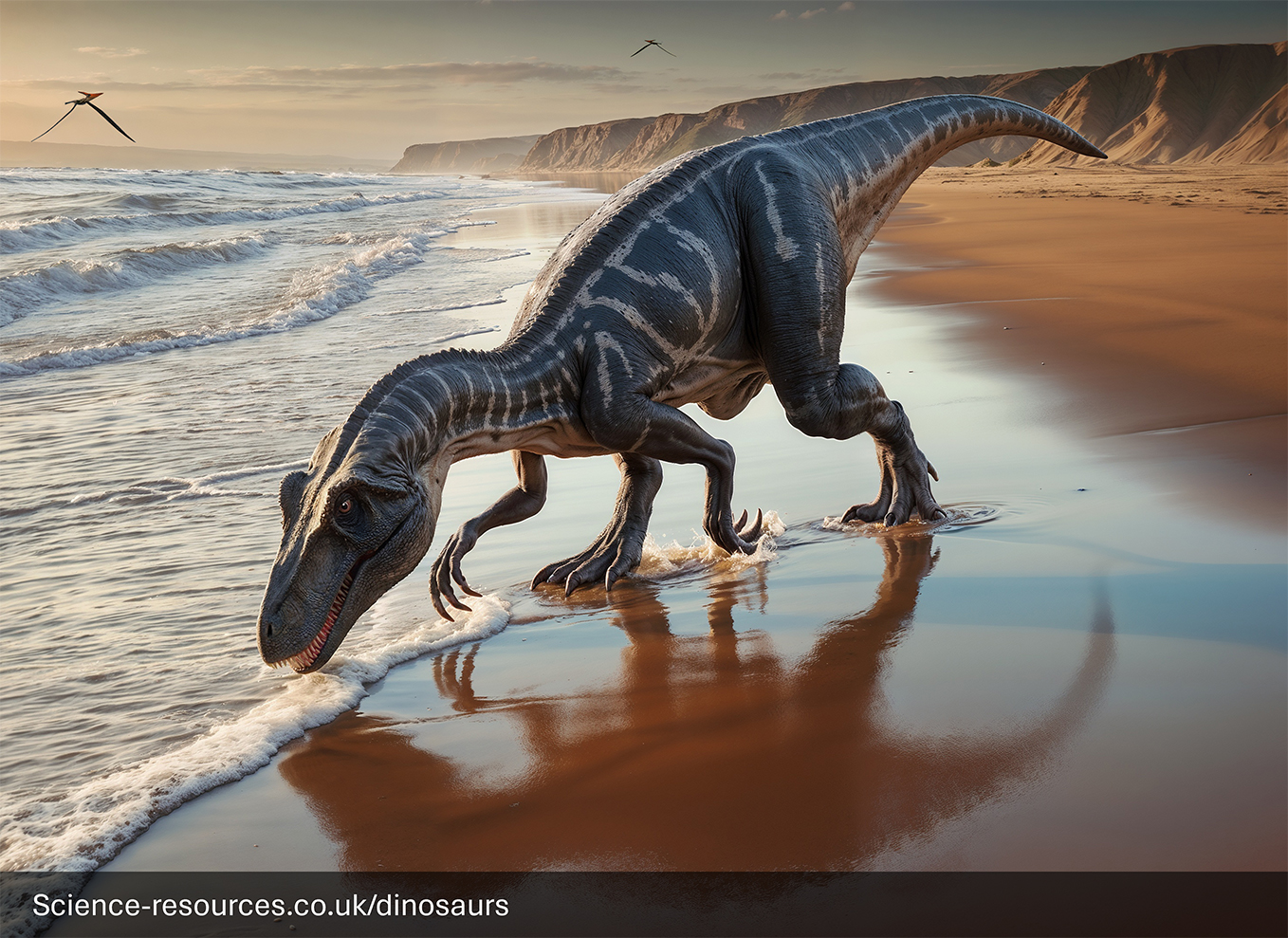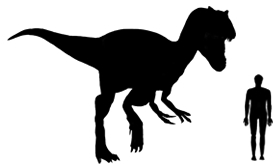Dinosaurs A:Z | A
You may also be intrested in: Free Dinosaur games
Dinosaurs: Afrovenator (African Hunter)
You may also be intrested in: Free Dinosaur games
Last updated: 12th Jan 2025 Afrovenator, which means "African Hunter," was a large meat-eating dinosaur that lived during the early Cretaceous period, around 164 to 159 million years ago. It was discovered in Africa and is known for its hunting abilities. • Length: Afrovenator could grow up to 7 to 8 meters (about 25 to 30 feet) long. • Weight: It weighed around 1 ton, similar to a small car. Afrovenator had a distinct look with its two powerful hind legs, short arms with three-fingered hands, and sharp hooked claws. It had a large head filled with blade-like teeth around 5 cm (2 inches) long. It was lightly built and could balance well on its hind legs while walking. Afrovenator Generative AI Notification: Some elements of this image have been created or enhanced using AI technology. To find out how we create all our dinosaurs, click here. Afrovenator was a carnivore, meaning it only ate meat. Its sharp teeth and claws were perfect for catching and eating other dinosaurs. Bite marks found in the ribs of a young sauropod called Jobaria suggest that Afrovenator may have hunted young or weak sauropods. Fossil remains of Afrovenator have been found in what is now Niger, Africa. It lived during the early Cretaceous period and was one of the top predators of its time. • Afrovenator's name means "African Hunter," highlighting its hunting prowess. • It belonged to a group of dinosaurs called Tetanurans, which also included Eustreptospondylus and Megalosaurus. • Its fossils were discovered by paleontologist Paul Sereno in 1993 in the Tiourarén Formation in the Agadez region of Niger. What is an Afrovenator?
How big was Afrovenator?
Appearance

What did Afrovenator eat?
Where did Afrovenator live?
Interesting facts
Pronounced: aff-ROW-ven-ah-tor


Afrovenator Facts
Name Means: "African Hunter"
Length: 27 feet (8 m)
Height: 8 feet (2.5 m)
Weight: 1 ton (1,000 kg)
Diet: Carnivore (Meat)
Time: Early Cretaceous - 140 million years ago
Habitat: Woodlands
Fossils Found: Africa
Afrovenator was part of a group of dinosaurs called Tetanurans, which also included dinosaurs such as Eustreptospondylus and the mighty Megalosaurus.
Q1: What is an Afrovenator?
A1: Afrovenator was a large meat-eating dinosaur that lived during the early Cretaceous period, around 164 to 159 million years ago. It was discovered in Africa .
Q2: How big was the Afrovenator?
` A2: Afrovenator could grow up to 26 feet long and weigh around 1 ton. It had a slender body, long tail, and strong legs, making it a fast and agile predator.
Q3: What did Afrovenator eat?
A3: Afrovenator was a carnivore, meaning it ate meat. It likely preyed on smaller dinosaurs and other animals, using its sharp teeth and claws to catch and eat its prey.
Q4: Where did Afrovenator live?
A4: Afrovenator lived in what is now Niger, North Africa. Fossils have been found in the Tiourarén Formation, which was a riverine environment during the Jurassic.
Q5: What makes Afrovenator different from other dinosaurs?
A5: Afrovenator is known for its slender build and agility. It is one of the few well-preserved theropods from Africa, providing valuable insights into the diversity of predatory dinosaurs on the continent.
Q6: How did Afrovenator hunt its prey?
A6: Afrovenator likely used its speed and agility to chase down prey. It may have also used ambush tactics, hiding and then quickly attacking its prey with its sharp teeth and claws.
Q7: What did Afrovenator look like?
A7: Afrovenator had a slender body, long tail, and strong legs. It had a mouth full of sharp teeth and its skin was likely covered in scales.
Q8: Why is Afrovenator important to scientists?
A8: Afrovenator provides valuable insights into the evolution of theropod dinosaurs and their adaptations. Its fossils help scientists understand dinosaur behavior, anatomy, and the environment of the Jurassic.
Q9: Where can I see an Afrovenator skeleton?
A9: You can see Afrovenator skeletons in several museums, including the University of Chicago, where the holotype skeleton is housed.
Q10: What is the significance of the name Afrovenator?
A10: The name Afrovenator means "African hunter," reflecting its predatory nature and its discovery in Africa. It was named by paleontologist Paul Sereno and his team in 1994.
Which family of Dinosaurs did Afrovenator belong to?
Afrovenator FAQ
You may also be intrested in:
Tags: How big was Afrovenator, Afrovenator size, where does Afrovenator rex live, how tall are Afrovenator, what does Afrovenator mean, Afrovenator, Afrovenator facts